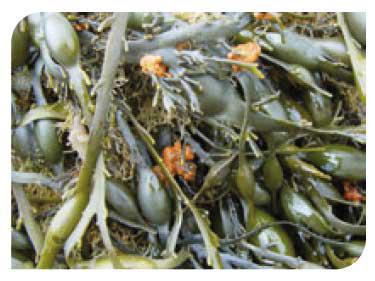Tide-swept algal communities - Intertidal Rock and Subtidal Rock
This includes the tidal rapids of sea lochs, areas of water between islands and also the strong tidal regions found between mainland Scotland and islands (e.g. the Pentland Firth). Large volumes of sea water are forced through narrow channels by tidal processes culminating in fast currents that, in certain locations, can exceed 10 knots. Although the turbulent conditions are largely associated with the top 5m of the water column, some tidal streams can be felt at depths in excess of 30m.
Many of these habitats are found on the west coast around the sills and narrows of sea lochs. These areas are inhabited by a wide range of animals such as sea mats, sea firs, sea squirts, sea anemones and sponges. Where the substrate is particularly stable, kelp parks may develop which in turn provide suitable habitat for a diverse epiphytic fauna and flora of sponges, sea squirts and foliose seaweeds. In deeper water, where light is limited, the sea bed is dominated by animals and it is not uncommon to see dense beds of brittlestars. Tide swept channels are particularly well represented in Scotland and are extremely important for a great diversity of marine organisms including a range of biogenic reef habitats such as horse mussel beds, flame shell beds and maerl.


